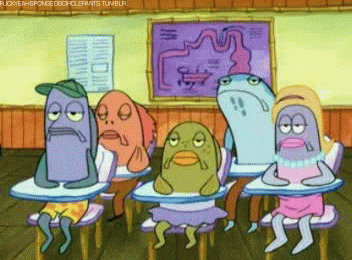When it comes to scheduling classes, students often find themselves looking for the easiest ones to take to boost that GPA. However, those easy general education courses also come with some extremely hard classes. Be prepared for late-night studying, early mornings and mountains of homework. From computer science to math, read on to see if you have endured any of these hard classes. If not, try your best to avoid them!
Read on to learn the top 10 hardest classes at Penn State.
1. CHEM 110: Chemical Principles I

Freshmen and sophomores must take this class if they’re considering pursuing a future in medicine or engineering. Designed to be harder with a heavier course load, this course pretty much weeds out the “weaker” students. What’s also tough is the fact that it’s just the first part of a two-semester chemistry course. This class definitely has some students thinking about changing their major.
2. PHYS 211: General Physics- Mechanics

Pre-med and engineering are two extremely popular majors for Penn State students. Therefore, the school has students take hard courses like these designed to have some students drop. This course proves to be difficult as it takes a calculus-based introduction to classical mechanics. Topics covered in this class include but are not limited to vectors, elastic and inelastic collisions and gravitational force with Kepler’s laws. The course also aims to provide students with a working knowledge of principles and their applications. The course also includes at least one lab or activity period every week that students must attend.
3. NURS 225: Pathophysiology

For nursing students, this course is unavoidable as students must successfully complete it before advancing to the junior-level nursing classes. That being said, you’d think a mandatory course like this would be on the easier side. When it comes to NURS 225, that’s simply not the case. The course explores the basic pathophysiological and psychosocial aspects of illness, the different pathological changes related to human variation and the environmental factors associated with different illnesses.
4. MATH 141: Calculus with Analytic Geometry II

This course combines calculus and analytic geometry into one giant nightmare of a course. Since this is a four-credit class, professors recommend 8-12 hours per week spent preparing for the class outside of the classroom. Those proofs you thought were hard in your high school geometry class are a piece of cake compared to what you’ll have to learn in this class.
5. CHE 350: Process Heat Transfer

This course will introduce you to heat transfer mechanisms and their chemical process applications. You’ll have to use thermodynamics and fluid mechanics that you learned in earlier classes and apply them to concepts in this course. The syllabus for this class also states that students should be able to model steady and unsteady heat transfer and design heat exchangers and simple heat exchanger networks. However, when it comes to CHE 350, only about 50%-70% of students who start finish the course with a C or above. For the students who decide to stay for the entire course and finish, the average course GPA is 2.20.
6. CHEM 213W: Laboratory in Organic Chemistry – Writing Intensive

Organic chemistry and intensive writing mashed into one brutal course load—what could go wrong? CHEM 213W has you take what you learned in previous organic chemistry lectures and apply those concepts in a wet lab setting. You will also need to do extensive scientific report writing to explain lab findings and organic chemistry techniques.
“CHEM 213W was one of the hardest classes I’ve taken because of the professor’s specific expectations about our writing and coursework,” said Penn State junior Harold Weidner.
Even with the ongoing pandemic, students still need to make sure they can make it to the in-person lab each week.
7. BIOL 322: Genetic Analysis

Not only does this class cover pretty much everything about genetics, but it also requires you to make it to a 9:05 a.m. lecture. For non-morning people, this can be pretty difficult. After this course, students should be able to (emphasis on “should”) solve genetic problems in Mendelian genetics, molecular genetics, population genetics and genomics.
“The information itself was super challenging,” said Penn State junior Harold Weidner. “Dr. Nelson was an awesome teacher… but the course made us examine our misconceptions about genetics and think critically about genetic dynamics in a way we had never been exposed to before.”
On the bright side, your lowest quiz grade gets dropped and clicker question points can help boost your average if needed.
8. ACCTG 471: Intermediate Accounting I

This course is designed for students to further understand accounting transactions and the accounting cycle.
“The content that we learned from the intro to accounting class to this is exponentially increased,” said Penn State senior Cindy Chen. “My advice? Lots of tequila, utilize the office hours and actually sit down and read the book before classes so you do not feel overwhelmed.”
Also, if you’re someone who relies on test grades being curved, don’t count on that for this course as test grades are rarely if ever curved.
9. NUCE 450: Radiation Detection and Measurement

This course’s name says it all when it comes to the difficulty level. Radio Detection and Measurement makes up one of the four core classes that every nuclear engineering student must take. To graduate, you need to achieve a grade of C or above. You’ll learn about proton and neutron charged radiation detectors, NIM devices and pulse height analysis. Think you have no clue what those are now? You still might not by the end of this grueling course. Grab a study buddy and just try to help each other get that C or above!
10. CE 340: Structural Analysis

Structural Analysis is one of those engineering classes where students get excited about receiving a “B” grade. The goal of this class is to solve for internal and external loads on a given beam or frame.
“The material just did not come to me naturally,” said Penn State junior Sophia Melocchi. “The problems are so long so if you made a mistake early on, the rest of the problem would be messed up. Also, if you are not very well versed in the problem-solving process, it is so easy to make mistakes.”
The two exams are also worth 80% of your final grade, so if you tank one it might be difficult, if not impossible, to recover.



















